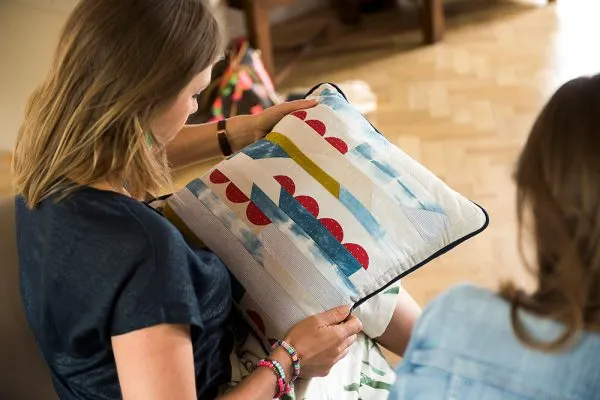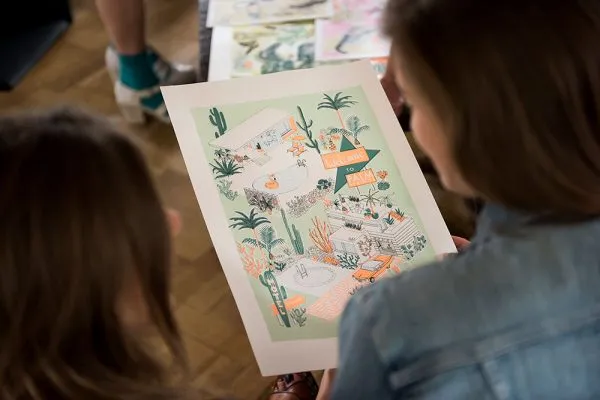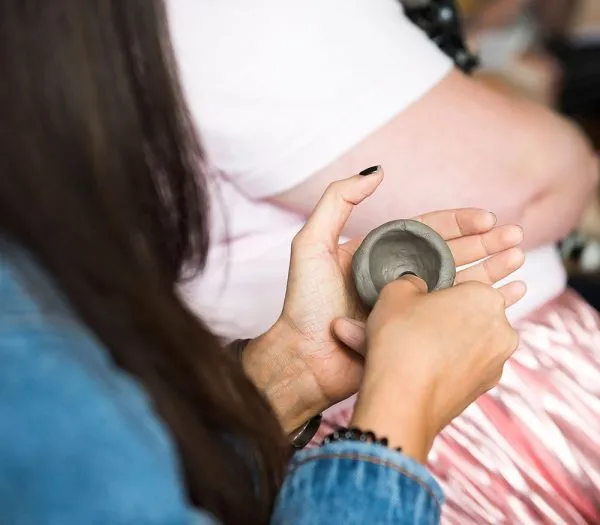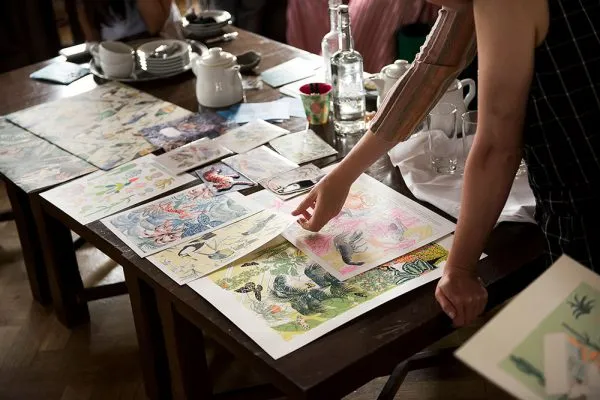Need some advice on how to price your handmade products? Patricia van den Akker of The Design Trust shares her top tips to help you price your crafts confidently…

Tip 1: Your costs are only the starting point
Before you start, think about what your business and living costs are. Lots of new creatives price their work without doing this. Work out what you want your salary to be, what your overheads are for the year (e.g. your studio costs, marketing, and website), what your materials cost, and how long it took you to create a piece. Need more help? We’ve got a calculation you can follow on The Design Trust’s website.

Tip 2: Don’t forget yourself
Designer-makers often forget to include their own time in their price calculations. If you want to create a sustainable and profitable business, you definitely need to factor this in! Your sales need to be greater than your salary, tax, national insurance contributions and all your business costs.
At the start of your business, you’ll probably be slower than more advanced makers, and you won’t be selling as much either. Your salary might be low to start with, but if you get faster at making and do more targeted marketing, your sales and income will pick up.
Don’t calculate your hourly rate based on a 40 hour work week. You won’t be making the whole week but will also spend your time on marketing, admin and other activities. Instead of dividing your salary expectations by 52 weeks, at 40 hours, base them on a more realistic figure. For example, 40% of your time making over 45 weeks.

Tip 3: Pricing is more than just the cost
There is much more to pricing then the simple formula costs + profit margin = end price. Think for a moment… why can some creatives charge much more than you? Often a higher profile maker can charge more. They are other factors to consider though, like how competitive your field is, what other makers are charging, branding, and materials used. Also consider where crafts are being sold. You can charge more at a high end boutique than a craft market, and there are geographical differences too, with London prices often higher.
You might want to price your products in more of a back-to-front way, by considering what clients might want to pay for your makes, and then working out your cost price. Where do you want to position yourself in the market? Do you want to sell products mostly around £10, £50 or over £100? Then work out what kind of products you can sell at that level. Work backwards from the retail price to your wholesale price (if you sell via retailers), and finally your cost price. Can you make it for that price? If so, then go for it!

Tip 4: Selling to retailers? Work out your prices first
When creatives start selling to retailers, they often run into problems with their prices. Retailers need to add a margin on top of the price that they pay you, meaning the cost of your products elsewhere – such as online or at events – needs to be similar.
So, how are retail and wholesale prices calculated? First double your cost price (see tip 1 on how to calculate that) to get your wholesale price, which is the price that you sell at to retailers. You need to double your cost price, because in reality you probably only sell around half your stock. A retailer will normally charge 2-3 times your wholesale price to get the retail price. The best practice advice is to calculate your retail price at the midway figure, 2.5 x your wholesale price. At the start of your business you might just want to sell directly to consumers if the extra mark up is too much.

Tip 5: What to do if you're too expensive
If you’ve calculated your ‘proper’ cost price (tip 1) and taken into account the retailer’s mark up (tip 4), then you might get a price that’s far higher than you’re currently charging.
Don’t panic! Some creative products, like handmade cards or mugs, have a ’fixed price’ in the market and it’s hard to sell them for more. You could always develop some products, such as mugs, to make them less functional and more arty, as there’s more flexibility with art pieces. Or make pieces more decorative to get a higher price.
Also look at where you are selling and if you are selling to the right people. Make sure that you share the true value of your work with your audience, and present products in the best way possible.

Tip 6: Stop underselling yourself
Many new creatives undersell themselves. Often they don’t know how to calculate their costs and prices, don’t feel like they can charge ‘professional’ prices, or don’t like talking money! If you’re serious about starting a craft business then you need to charge the right prices and to be able to make a living.
It’s a common mistake to decrease your prices if you aren’t selling enough or to discount them regularly. But often you still don’t sell that much, and you get resentful – with yourself and the client. If your prices are too low then most regular buyers of handmade products will know, because they know what something is worth. Instead of thinking they are getting a bargain, they may think ‘what’s wrong with it?’.
If you want to sell your handmade products as a business you need to charge the right price. Not too much, not too little. Value yourself, and communicate this to your ideal clients. Spend time on marketing to let people know about your fabulous products or services.
Patricia van den Akker is a creative business adviser and trainer, and the Director of The Design Trust, an online business school for designers and makers. She runs online workshops on business and marketing topics, including costing and pricing your creative work.
She is also the author of Dream Plan Do, a planner journal for creative professionals to help them get more focused and productive. The 2019 Dream Plan Do journal will be launched this autumn – click here to get a heads up when it launches.